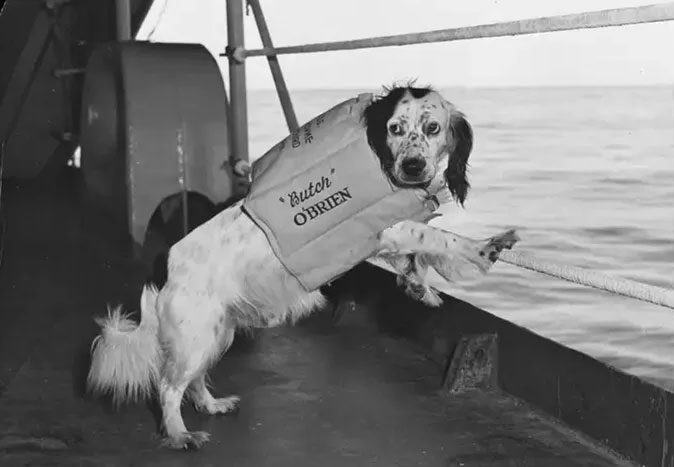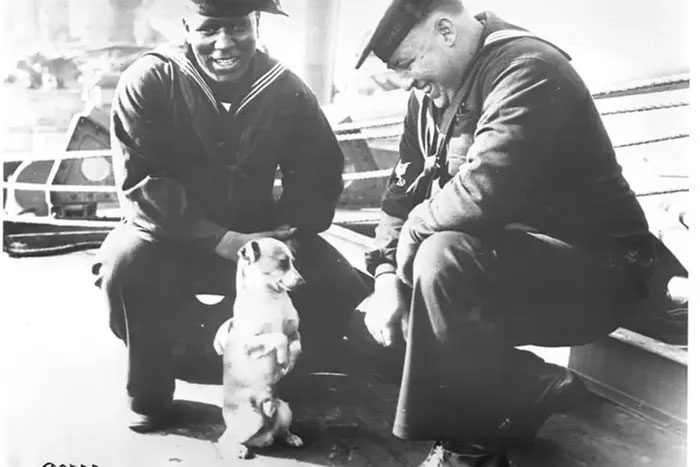Not everyone is aware of the fascinating stories surrounding this special crew member.
History records that dogs have accompanied humans on ships for thousands of years. Paintings in Egyptian tombs and ancient hieroglyphs also depict this relationship.
Initially, dogs joined voyages merely as companions, but later they were trained to become contributing members of the ship’s community. Gradually, dogs were trained to catch fish and herd them into pens in the rivers. These animals also helped protect sailors in unfamiliar coastal areas due to their ability to detect potential dangers.

Initially, dogs joined voyages merely as companions.
Additionally, they could perform pest control tasks on board due to their ability to catch rodents, often proving to be even more reliable than cats.
Some dogs were also bred for rescue missions, trained to jump into the water if a sailor fell overboard. However, not all breeds succeeded in this role.
For the United States Navy, during the first 150 years, dogs were simply unofficial animals aboard ships. However, the importance of dogs to the crew is undeniable. These animals helped reduce stress, provided entertainment, and lowered blood pressure for sailors. They were even trained to shake hands with visitors when Navy ships docked in foreign ports.

It wasn’t until World War II that dogs became official members of the U.S. Navy.
At that time, the U.S. encouraged citizens to donate well-trained dogs for war efforts. The Navy’s program was initiated after the Coast Guard had to use dogs to patrol the coastline to fend off intruders, eventually leading to dogs being assigned to the Navy and Marine Corps.
Interestingly, the U.S. Navy made other naval forces envious because sailors were well-fed, but no sailor ate as well as the dogs on board. They were often treated to steak every night along with supplementary bones.
However, sometimes Navy dogs caused trouble. They could fall asleep during watch duties, disappear at ports, or become so excited by the scent of land that they jumped into the water before the ship docked.

Sometimes, Navy dogs would cause trouble.
Whether to allow dogs on board is at the captain’s discretion. However, on ships that do have dogs, these animals help bond the entire crew. The fate of many Navy dogs during World War II remains unclear. By law, they were to be auctioned off legally rather than returned to their owners or sailors.
To this day, the Marine Corps and Navy still utilize service dogs. However, Navy ships have recently begun using a new type of dog – robotic dogs – to patrol around ships and bases.


















































